After I finished writing last month’s column about the legacy of Dave Sim and the caveats of collecting Cerebus # 1, I started thinking about Canadian comic creators who started self-publishing their own comics contemporaneously. Many Canadian creators were getting their start in the late-1970s by collaborating as parts of anthologies, but one creator stands out to me for working alone during this period. That man is Jacques Boivin and his importance in the history of Canadian comics is significant, albeit for radically different reasons than Dave Sim.
Prior to 1985, Boivin’s work had been mostly overlooked outside of Quebec (at least among Canadian comic readers). This started to change when he began publishing backup stories in the Matrix Graphic Series comic MacKenzie Queen (written and drawn by Bernie Mireault, who’s character The Jam is a classic of the era). MacKenzie Queen is a fun series, but this is not why the early work of Jacques Boivin deserves attention.
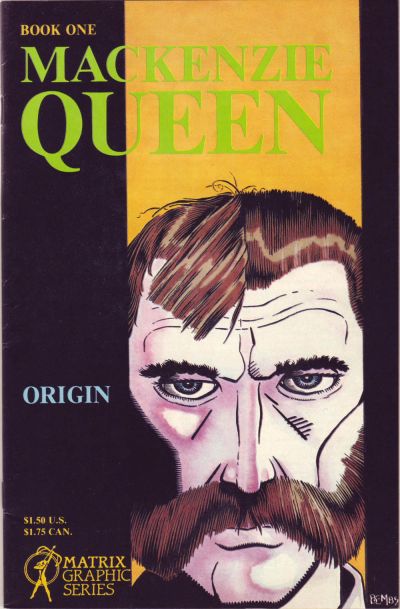
Why should Boivin be on the radar of Canadian comic collectors? During the same year that he worked on MacKenzie Queen, Boivin began his working relationship with Sylvie Rancourt, doing covers for her comic Mélody. Rancourt’s series about her life as an exotic dancer was an instant hit in Quebec. It is now widely considered to be the first autobiographical comic published in Canada, predating the works that came to dominate the Canadian scene during the late-1980s and into the 1990s that are generally associated with Drawn & Quarterly and creators such as Chester Brown, Seth, Julie Doucet and American ex-patriot Joe Matt (who was living illegally in Canada at the time).
Indeed, Mélody is, in my opinion, the most important French-language comic book series published in Canada during the Silver Age. The six-issue series is a work of high art, even if the subject matter is not for everyone. Rancourt was an amateur artist, but narratively the series is funny, enlightening and is a pleasure to read from start to finish. The fact that the original series was published in French prevented it from making waves among English readers. The first Mélody comic published in English was a mini published in 1987 by Rancourt that reprinted the first issue (with Boivin providing the translation). This one-shot, titled Mélody: The Comic Strip Autobiography of a Nude Dancer had a print run of only 110 copies and is virtually impossible to find today. Until recently, it was the only portion of Rancourt’s original series that had been translated to English. Fortunately, Drawn & Quarterly printed the entire series in English a few years ago (with translation by Helge Dascher). If you have not had a chance to read Rancourt’s comic, I recommend picking up a copy of the Drawn & Quarterly tome.
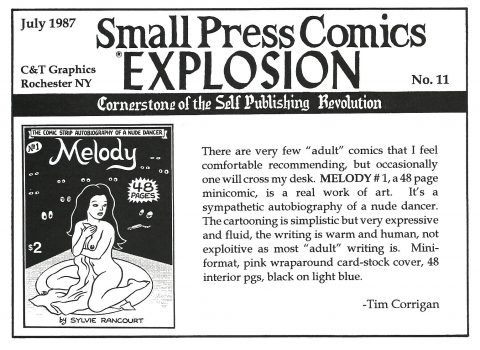
Despite being a French comic, Kitchen Sink Press took notice and hired Rancourt and Boivin to create a new series for the American market. The new series was scripted by Rancourt, but translated, drawn, inked and lettered by Boivin. The series lasted for ten issues from 1988 to 1990 and became an instant cult classic. Different Mélody one-shots appeared throughout the 1990s in French and English. Given the importance of Rancourt’s ground-breaking series, I will offer a full treatment of Mélody at some point down the road. I suspect that, had the series been originally published in English, it would be better known in English speaking parts of North America. Without Boivin, the series may not have ever achieved its status as a cult classic and the two comic creators will forever be linked.
Despite Boivin’s successful collaboration with Sylvie Rancourt, he is not a household name per se and his early works are, unfortunately, not on the radars of most collectors. This may be due to his self-published comics being lost in the sea of independent comics that were available at the time. It also may be due to Boivin working outside of Montreal when he first got his start working in French, which has long been the hotbed of Quebec comics.
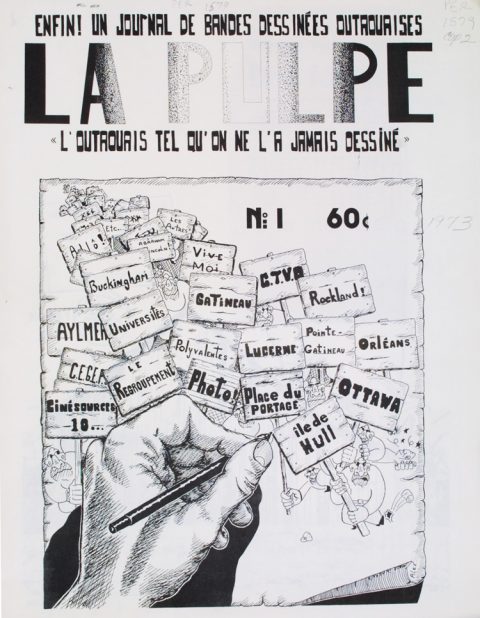
Boivin had been working in bandes dessinées since the early 1970s, but he was part of a coterie of creators who were based in Outaouais region in the western part of the province around Gatineau. He most notably was a contributor to the region’s best known bandes dessinées series La Pulpe published by Cinésources 10 (which published eleven issues between 1973-1975). By the late-1970s he started self-publishing in English. His first two comics, 1978’s The Heart Single Field Theory and 1979’s Jacques were published in Ottawa, but had low print runs (1000 copies each) and apparently did not sell well. Both of these comics are magazine size.
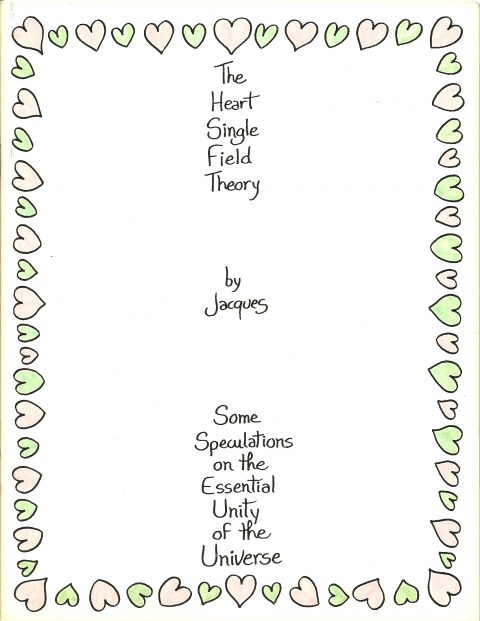
The Heart Single Field Theory is truly esoteric work that is unparalleled in the history of Canadian comics. It is less a comic than an attempt to demonstrate the essence of an idea from physics in the form of evocative poetry and drawings. Understandably, this did not set the comics world on fire. It did, however, capture the attention of the scientific community and, in 1980, the comic was republished in the scientific journal Speculations in Science and Technology. It was republished again in 1995 in the edited academic volume The Pattern Book: Fractals, Art and Nature. The editor of The Pattern Book, Clifford A. Pickover, explains the work succinctly, noting that Boivin’s idea, “holds that all events in the universe derive from the structural configurations of aggregates of Hearts, a Heart being the sole building block of the universe and existing in only one state, a basic self-consistent field.” I have read the comic a couple of times and it is a difficult read for someone like myself who is not a physicist. That said it is a truly unique and ambitious speculative specimen from this era of Canadian comics.
Boivin’s second self-published comic, Jacques, consists mostly of works that were originally published in La Pulpe, but have been translated to English for the first time. Two versions of the comic were printed simultaneously with different coloured covers (one pink and the other yellow). The main story in the comic, “Flora,” is an adult-themed science fiction tale about a botanist who inadvertently grows a plant from recently uncovered seeds. The plant grows into a nymphic young woman to the surprise of the botanist. The botanist and nymph have sex, which leads to the nymph’s death, but also produces seeds. The story ends with the botanist growing new plants from the seeds their sexual encounter produced. Jacques also includes short stories and single panels featuring some of the whimsical alien characters that Boivin became best known for during the early 1980s and arguably his best-known original character, Fluffhead. I look at Jacques as a transitional work that moves Boivin away from the kind of work he was doing in French anthologies and towards the mini-comics that he produced prior to collaborating on Mélody.
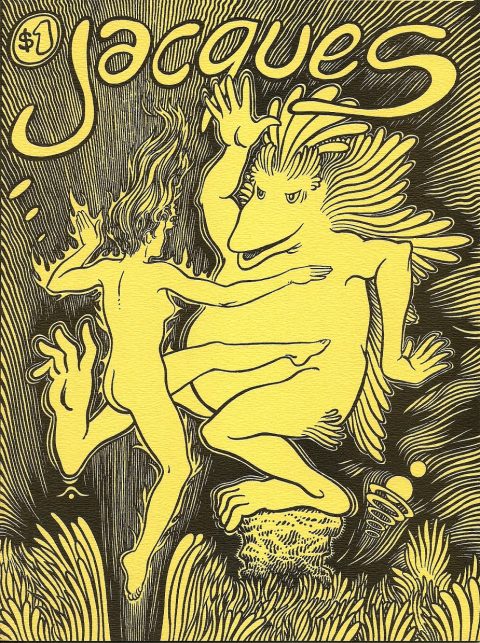
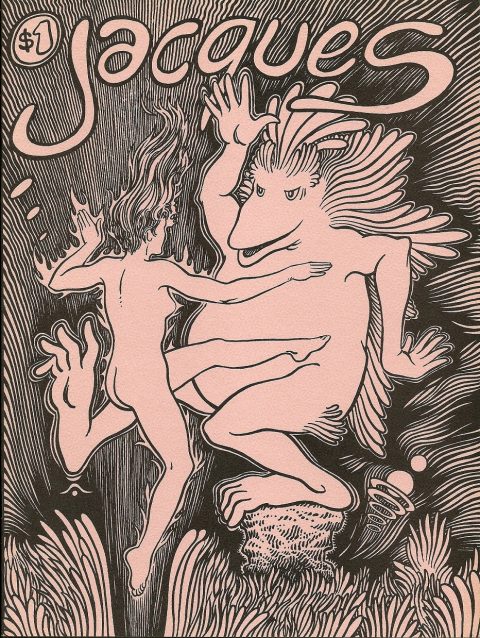
After Jacques, Boivin switched to minis and printed his comics in the United States (mostly through Lakewood, Colorado’s Phantasy Press). His early-1980s minis attracted a small audience and comics like 1983’s Fluffhead # 1 and 2, 1983’s Dinosaur Comics and 1982’s Beastie and the Boo (self-published in San Francisco) had small print runs too. His other comics through Phantasy Press, Land of Consciousness and the micro-comic Aliens also had small print runs. None of these abovementioned comics had print runs greater than 500 copies and, in most cases, these print runs occurred over multiple printings. As such, all of Boivin’s comics from the late-1970s and early-1980s are incredibly scarce, which makes collecting Boivin quite daunting.
Dan, Victor and I came across several references to Boivin when we started our research project because his works are listed in Jay Kennedy’s The Official Underground & Newave Comix Price Guide, but could not find physical examples of his comics or even cover scans online. Outside of a one-shot he did for Renegade Press and issues of the Kitchen Sink Mélody series, we were having a difficult time finding information about these comics. Eventually, we located some of his comics for sale through the Seattle-based adult themed retailer Alta-Glamor (NOT SAFE FOR WORK), but we felt that their prices were so incredibly high as to be unrealistic (in fact, the same comics we looked at in 2017 are still for sale on their website today).
With a little bit of detective work, Dan was able to track down Boivin and explained to him our research and collecting interests. By this point, the three of us had reached out to dozens of Silver Age creators with mixed results. To our surprise, Boivin had kept meticulous records about his early comics and was able to provide us with file copies of most of his comics for a reasonable price. The information he provided about print runs and variants was second to none and to this day we have encountered few comic creators who kept such detailed records of their works.
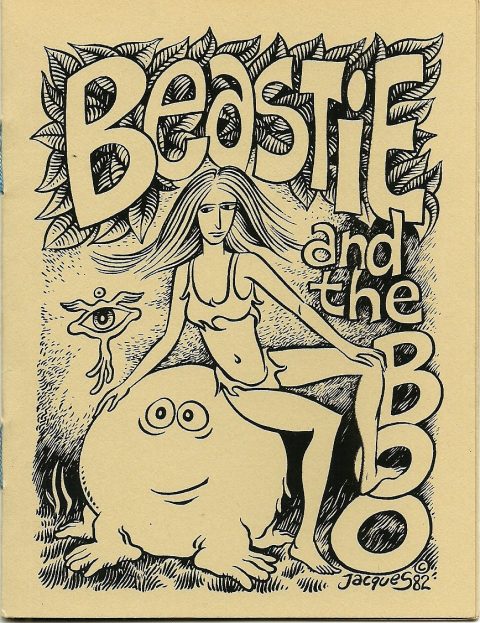
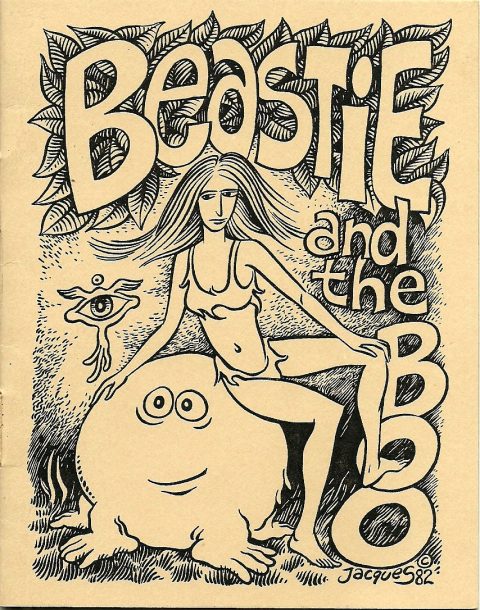
Perhaps the most impressive example of this is demonstrated by the chart he sent us a scan of detailing the variants of Beastie and the Boo. Originally published in 1982, this mini-comic had seven printings and twelve cover variants by the time that the final version was produced in 1989. Several of the cover variants had additional binding variants, meaning that there is a total of fifteen variants of this particular comic. This is incredible when considering that Boivin published only 265 copies of the comic between its various print runs. The following chart is, essentially, a researcher’s dream. However, if you have what I call “the Pokemon mentality” and dream of “catching them all” then you might be wasting your time. I own two of the variants of Beastie and the Boo and would love to have additional ones, but am resigned to the reality that I may not ever procure any of the other variants.
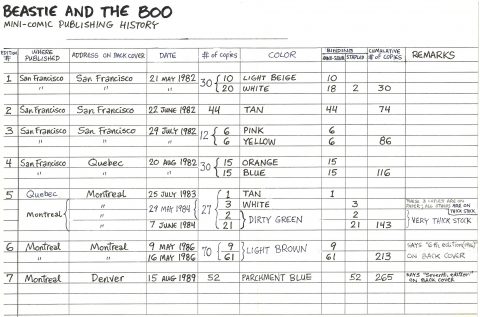
Some collectors may see these American printed minis as not being truly Canadian and this begs the question as to whether or not a completely Canadian created comic printed in a different country should be included on a master list. In my opinion, comics like these are only un-Canadian because of where they were printed and I personally include works like this on my master list, albeit with an asterisk. Since my first column was published in December, I had received numerous requests from collectors asking for lists about specific series or authors. In the spirit of Jacques Boivin’s meticulous record keeping and because my audience demands it, I am going to start offering lists like this beginning with this column and will continue to do so in cases where I am not discussing single works (which I really have not done since my column about Fuddle Duddle.
| Title | Number | Year | Publisher | Print Run |
|---|---|---|---|---|
| Aliens | nn | 1983 | Phantasy Press | 500 |
| Beastie and the Boo | nn | 1982 | Jacques Boivin | 265 |
| Complete Fluffhead, The | 1 | 1987 | Phantasy Press | 1300 |
| Dinosaur Comics | nn | 1983 | Phantasy Press | 500 |
| Fluffhead | 1 | 1983 | Phantasy Press | 500 |
| Fluffhead | 2 | 1983 | Phantasy Press | 500 |
| Heart Single Field Theory | nn | 1978 | Jacques Boivin | 1000 |
| Jacques | nn | 1979 | Odyssey Printing | 1000 |
| Land of Consciousness | nn | 1984 | Phantasy Press | 500 |
Note that in addition to Beastie and the Boo, both Dinosaur Comics and Land of Consciousness had multiple printings and that the print run numbers that I share here include the total number of copies printed across various printings. Dinosaur Comics has three separate printings, while Land of Consciousness had two printings. Variants of these two comics are difficult to identify because even side-by-side they are essentially identical. Luckily, the printings of the first two runs of Dinosaur Comics are listed in their indicias, while the third printing does not have “1st” or “2nd” listed in the indicia. The difference between the two printings of Land of Consciousness is harder to identify, as all printings are listed as “1st” in their indicias. The difference is that Boivin held back 100 copies and hand augmented them. He did the same thing for the third printing of Dinosaur Comics, making these later printings more desirable among collectors.
You will also notice that there is one comic on this list that was published after Boivin and Rancourt began collaborating. The Complete Fluffhead is the final comic that Boivin published through Phantasy Press and is the only regular size comic book he produced during this era. The one-shot reprints the earlier issues of Fluffhead in their entirety. The Complete Fluffhead has the largest print run of all of Boivin’s early work, which I suspect is the result of him gaining a lot more recognition by the late-1980s. However, at only 1300 copies, this comic is scarce and rarely comes up for sale.
For the sake of offering a complete glimpse at Boivin’s self-produced output from this era, here are examples of the covers the remaining comics listed above. With the exception of Aliens (which is a micro-comic that can fit in the palm of your hand) and The Complete Fluffhead, all of these are standard size mini comix. Each of these are from my personal collection. I have not included pictures of printing variants because the differences are almost impossible to see in scans.
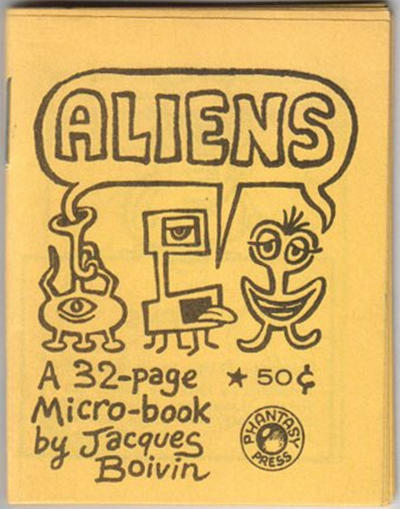
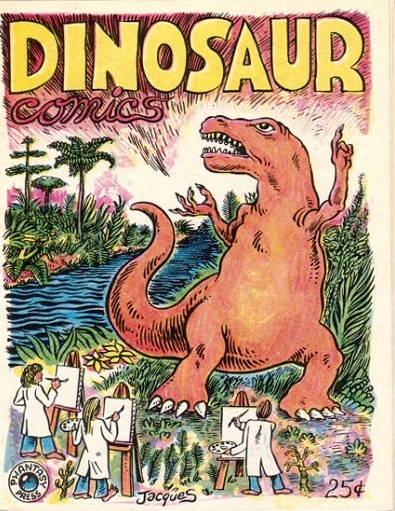
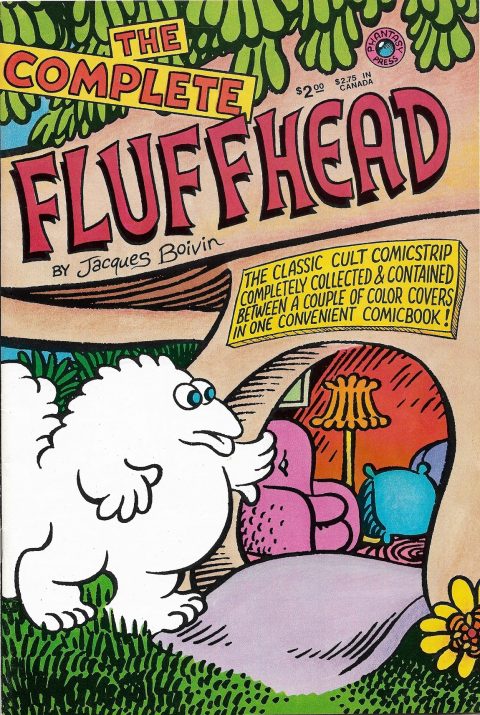
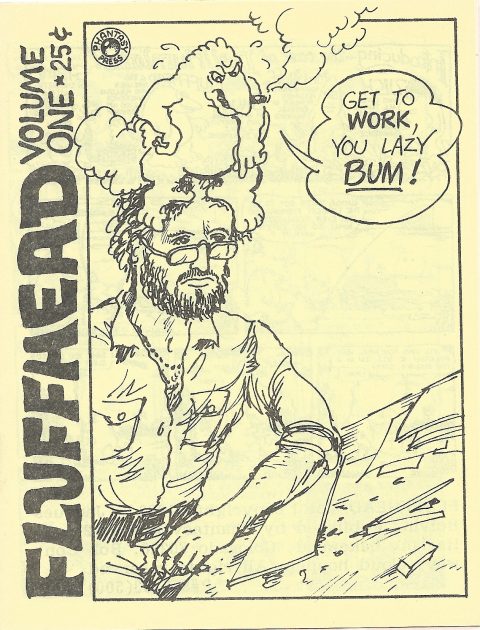
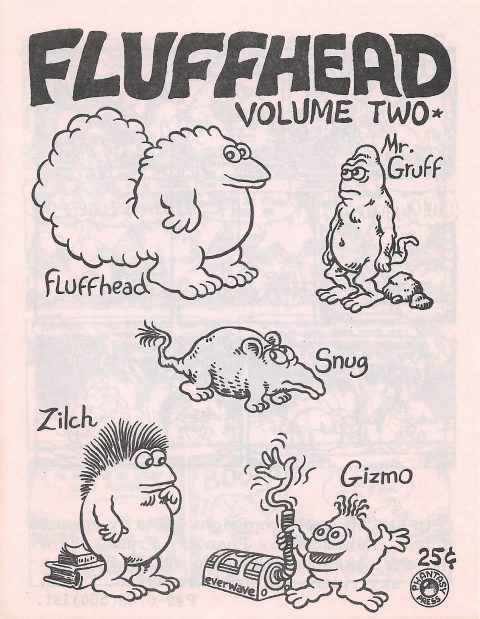
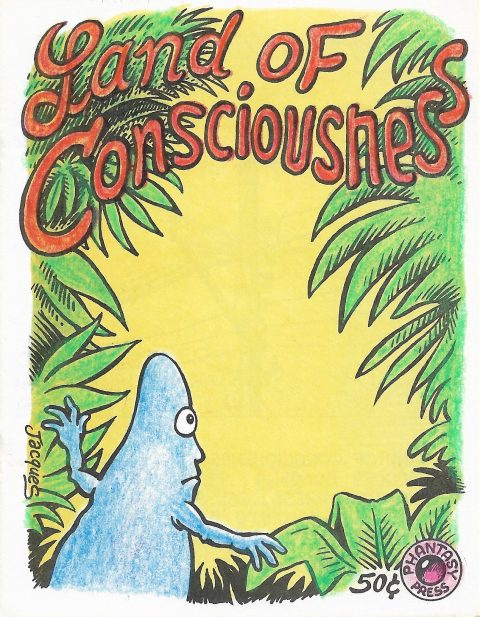
Given Jacques Boivin’s importance to the late Canadian Silver Age through his collaboration with Sylvie Rancourt and helping her find a larger audience, it is unfortunate that Boivin’s earlier works are not on the radars of most Canadian comic book collectors. Boivin demonstrates a wide range as a writer and artist, given that he switched entirely to publishing in English during this time, produced predominantly whimsical comedic stories in his minis and also dabbled in science in The Heart Single Field Theory.
I think that what hurts the collectability of these books is that they are so scarce as to be almost unobtainable and we were fortunate to be able to source file copies from the creator himself. Since so few copies of any of these books change hands, it is impossible to offer reasonable values at this time. That said, the prices that Alta-Glamor has been asking for the small number of Boivin books that they have in stock are, in our opinion, so high as to be unrealistic. At the same time, I have seen copies of some of these books slip through the cracks on eBay over the past couple of years for under $20 CAD each. A patient collector may be able to ferret some of these out, but they certainly do not come up for sale often. Boivin is a unique talent that rarely gets the attention he deserves, so if you can find examples of his early English language comics, I recommend checking them out.

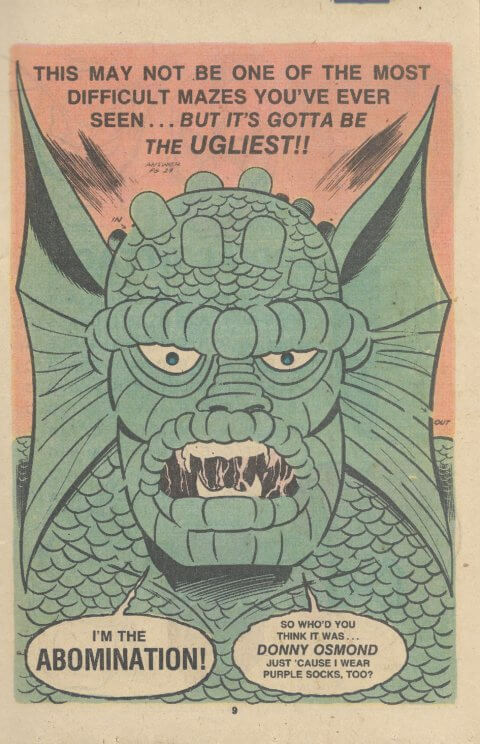
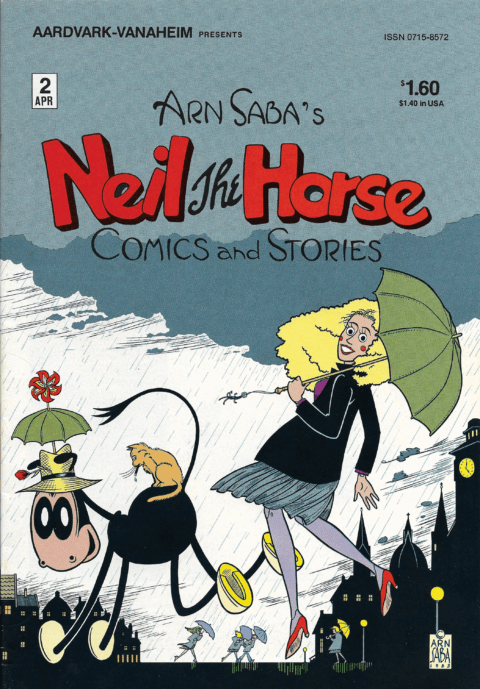
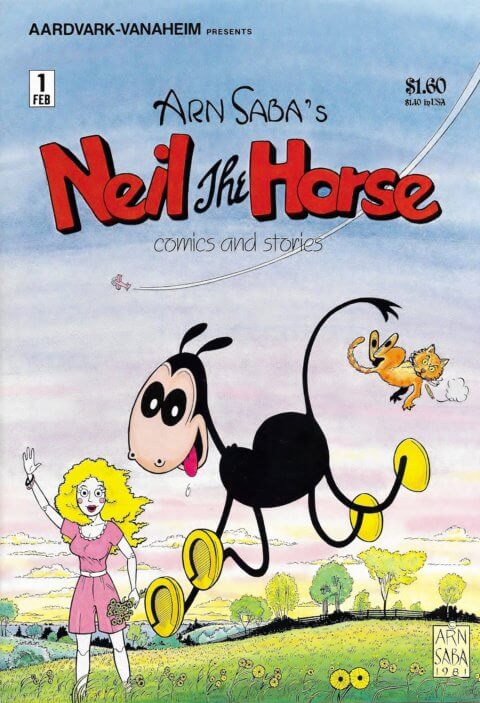
You had me at “Physics” and “Field Theory”, Brian.
Like a Canadian Doctor Strange , you are opening dimensions of Canadian Comics I have never seen and feel compelled to find.
Now I have to find a whole lot of incredible Canadian books that make it harder and harder to be a completionist.
The depth of Canadian comics is amazing.and underrated in the shadow of US publishers and their appetite for material to publish, stripped of their artistic origin, that Canadians have little chance to locate and collect without researchers like you.
A good article and nice research brian. I believe you can still get a Melody poster and a couple of buttons from Denis Kitchen at his website.
If I were to add anything here it would be a request for a short interview with the creator(s) of the comics that you’re featuring in your postings. I loved the type of that were in the old Comics Interview magazine and it would be nice to find out additional biographical info andif someone is appearing at a comics fest near them (or even far afield) and what future projects may be. Just something I’d like to see.
Thank you both for your comments. Stay tuned, activejim, because I have barely scratched the surface of what the Silver Age has to offer. I expect that I will be able to offer many more checklists moving forward. That said, aiming to be a completionist for this era may be a truly impossible task. I also like the moniker “Canadian Doctor Strange.” Thanks for that!
Jim B, I had no idea that Kitchen had leftovers from the English Melody run available. Thanks for the tip. Regarding interviews, these are part of my master plan and I have a couple of irons in the fire, though I likely will not be posting any this year. Columns like this one about Boivin’s early English language works sets the stage for interviews down the road. It makes sense to me to set the table with information about the comics prior to providing an interview (at least in many cases). Were I to conduct an interview with someone like Mr. Boivin now, having printed this month’s article, I think it would be stronger for readers because everyone will already have some knowledge and interest about his comics. That’s how I feel about the matter, for better or for worse..
4.5